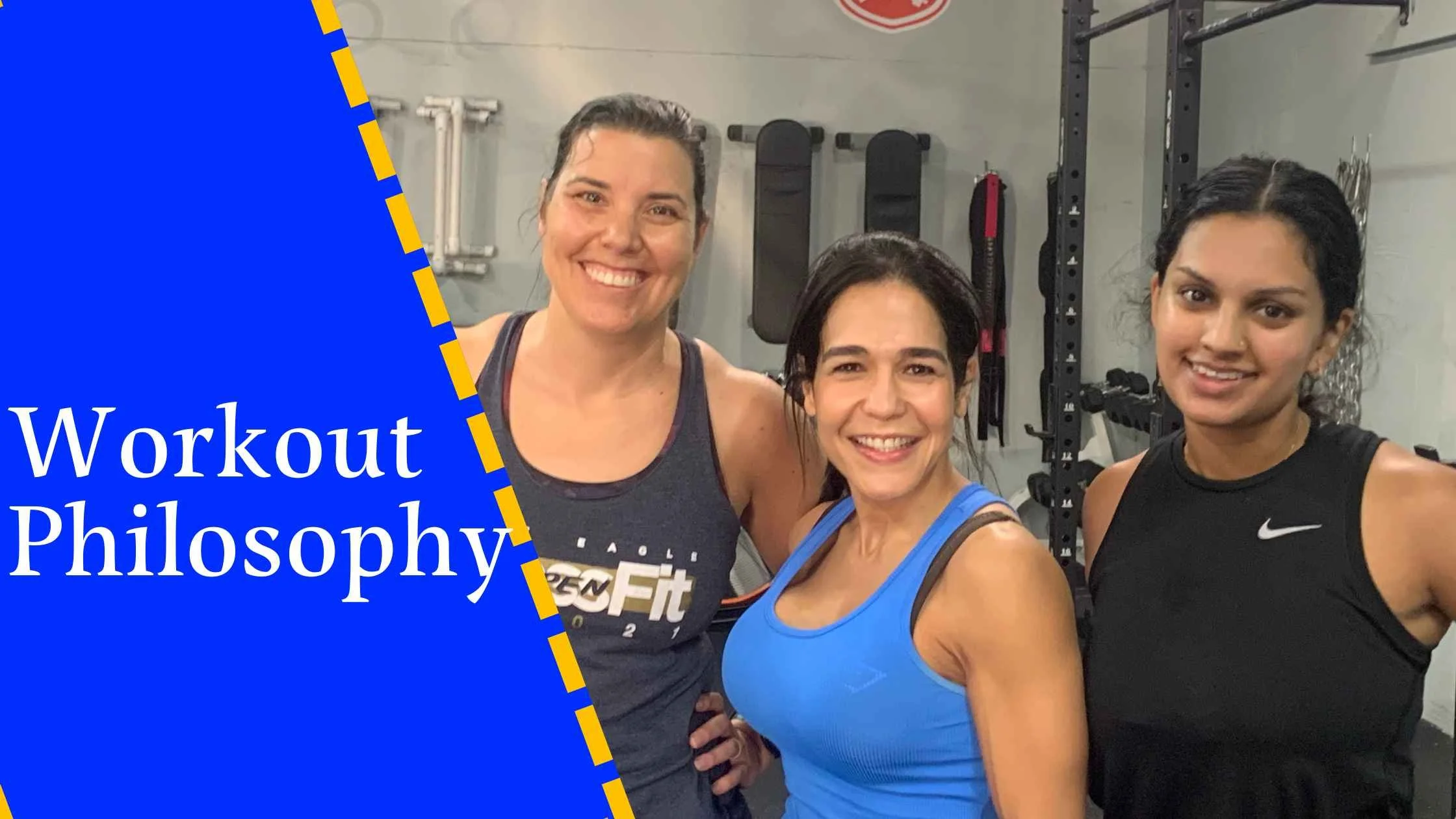Our Blue Eagle Workout Philosophy
At Blue Eagle, we have a few principles when coaching out clients.
1. Avoid redundancy with complimentary/opposite movements to keep the intensity high
This sounds great on paper, but is difficult when you put it into practice. Some movements fit better than other movements: bench press vs. pull-up. Back squat vs. deadlift. Or to get really "opposite," deadlift (which is a lower body pull) vs. bench press (which is an upper body press).
After these basic movements, it gets complicated quickly. We did a CrossFit Open workout in 2019 with rowing and wall balls. This seems complimentary until you realize your legs are burning the entire 20:00 minutes.
What about thrusters? They are everything except a lower body pull.... except that you have to perform a clean, which is a lower body pull, to start every set. They do not tax our upper body pulling, which is why we pair thrusters with pull-ups in Fran. But almost every movement will overlap with thrusters in some way.
Most of my research for our MetCons is finding movements that are complementary. The reality is that there is overlap across movements in most every MetCon. If you ever have ideas on 2-3 movements we should incorporate into MetCons, I am always happy to hear them!
2. For heavy lifting days, the working sets start around 80 %… for most athletes….. most of the time.
We want all of our workouts to add value. If our rep scheme is 8, 6, 4, 2, 2, some of us have a tendency to go too light on the set of 8 and maybe even the set of 6. We want these sets to be "working sets." My definition of a "working set" is a set that taxes us and adds value.
Signs you should look for to see if a set is a working set:
Does it take focus for us to perform the set? If yes, then great! Sometimes, we may talk, laugh, or generally not pay attention to the lift, especially during a warm-up set. Talking, laughing, and paying attention to other things means that set was a warm-up.
Did the set take effort? Working sets require effort, while warm-up sets may not. Watch for a change in bar speed. If the bar slows down, then it was most likely a working set.
Did the set require rest? Warm-up sets do not require rest. Add weight to the bar, get your set in, add more weight, do another set, etc. These are warm-ups. Working sets require us to rest in order to perform hitting that intensity again.
At Blue Eagle, you will hear us talk about working sets starting at about 70 %. The reality is this is a generic number and will depend on the client and the lift. Stronger clients will hit working sets at a lower %. Clients with a longer training history will also hit working sets at a lower %. Clients with more "slow twitch" fibers will hit working sets at a lower %. Lifts requiring more time under tension will make clients hit working sets at a lower %.
With all of these factors, you can use the 70 % as a general guideline. But then take into account the three bullet points I mentioned above as you lift.
3. For heavy lifting days, is the goal to fail at one point, so we should teach how to bail?
Training to failure, or lifting weights until you can't complete another rep, can have some benefits, including muscle growth, breaking through plateaus, and ensuring we are giving all we have.
However, training to failure, especially in compound movements can also have some risks. Training to failure increases our chance of injury, both to our muscular and skeletal systems. But the biggest risk is a lack of trust in coaches.
At Blue Eagle, we rarely want our clients to fail a lift. The reason is more psychological than it is physical. Some clients can bail on a lift and have no problem coming back the next day. But most of us will struggle.
In my first two years of owning the gym, I taught clients to bail. They all bailed successfully. No one ever got hurt. But about 6 of them I never saw again. They quit within days. They no longer trusted me to take care of them.
This is also true for clients doing work on the rig with a suicide grip, for example, pull-ups with their thumb on top of the bar. I have had three clients fall off the rig with a suicide grip. All three quit the next day.
Why do I want clients to wrap their thumbs around the bar? So they don't fall off and then quit. I talk about engaging their lats, "bending" the bar in half, etc., but the real reason is that I don't want them to fall.
The best thing we can do for our clients is to convince them to show up tomorrow... forever.
We do this by spotting them. If you have concerns about spotting, your spotting technique, or general questions, let's talk.

